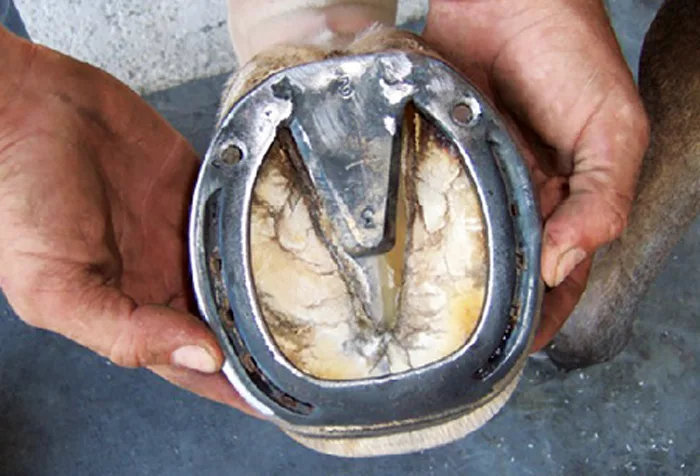American Farriers Journal
American Farriers Journal is the “hands-on” magazine for professional farriers, equine veterinarians and horse care product and service buyers.

If the heels aren’t too compressed when presented with a prolapsed frog on a foot with a negative plantar angle, you can weld some frog support in an open-heeled shoe.
Less attention often is given to shoeing the hind feet in the erroneous belief that the front feet are more important.
Consider the possibility of a hoof abscess first during the onset of a fast lameness, especially if it’s in one foot.
When a rider of a well-conformed horse notices a decrease in performance and a shortened stride, its hocks could be causing discomfort.
When discussion turns to equine lameness issues, invariably the front feet and legs get the lion’s share of attention.
While front end lameness is more prevalent than in the hind, having sound, fully functional hind legs and feet are essential to any horse.
The hindquarters have three basic functions — they are used to propel the horse, to stop that forward progress and to be a pivot point to change direction. In the course of a horse’s life, the hindquarters undergo a lot of abuse and can wear out and break down.
Often, less attention is given to shoeing the hind feet than the front feet in the belief that the front feet are more important. Obviously this is not the case. This article will attempt to offer some insight into how to keep a horse sound and ways to help it when normal shoeing is not enough.
The basis for all good shoeing starts with figuring out what you have to work with and what you can do with it.
Before you start trimming, take a few seconds and study the…